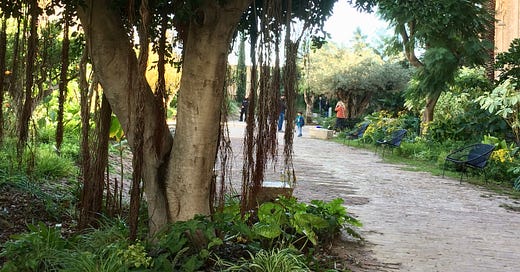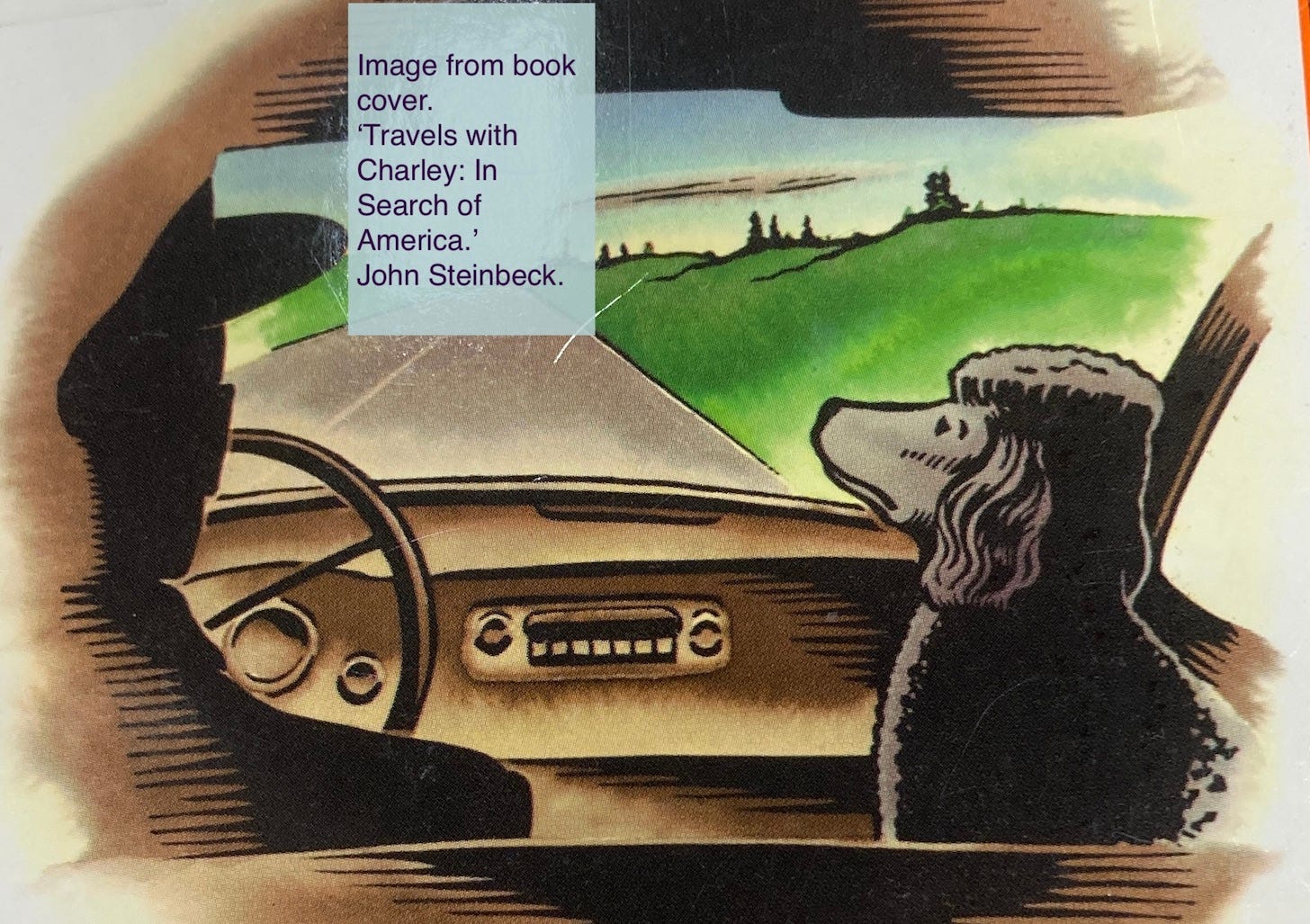In this Substack we celebrate the art and craft of Place Writing. Do you want to be inspired? Join our band of readers and writers who love everything about place and home. Subscribe now and get fortnightly posts delivered to your in-box for free.
Travel writing is a familiar genre, so what’s the difference, if there is one, between this and Place Writing?
Without a doubt, travel writing has changed over the last few decades as more people have acquired the resources of time and money to fund global travel, and extensive opportunities to write about it are at one’s fingertips. Now that we can research countries and specific locations on the internet without recourse to guide books or maps, travel writing no longer needs to be about where to go and how to get there. The craft has developed and, in doing so, I think it has moved more towards Place Writing. In some situations I’ve noticed the terms have become interchangeable and for this reason I thought it worth exploring how the two types of writing might differ.
I enjoy listening to the Travel Writing World podcast hosted by Florida-based Jeremy Bassetti—it examines all aspects of travel writing and delves into how authors come to be travel writers. Many begin their careers in journalism and I would suggest that people who enter this profession have travel in their DNA.
In John Steinbeck’s classic road trip novel with his pet poodle, Travels with Charley: In Search of America, he talks about the disease of travel, the physical yearning for it. And there’s a word in German—Fernweh—which means ‘away sickness’. It’s the feeling you get when you’re at home but desperately want to be somewhere else, it’s the opposite of home sickness, and I guess most seasoned travel writers experience Fernweh. Steinbeck records the visceral effect of it, ‘Four hoarse blasts of a ships's whistle still raise the hair on my neck and set my feet to tapping.’ And when a journey is well-planned, he writes, ‘we do not take a trip; a trip takes us. Tour masters, schedules, reservations, brass-bound and inevitable, dash themselves to wreckage on the personality of the trip.’ He kindles the idea that the traveller should yield to the experience and become part of it rather than skim a journey’s surface. I think that if such total immersion is achieved, one could be writing about place, as opposed to a place, or many places.
Planning new adventures became difficult during the pandemic when travelling was banned, and many travel writers had to cancel trips losing income as a result. In search of alternative methods of gathering material to meet deadlines, some writers stayed put and used their imagination and memory to achieve their requisite number count.
Experience of different places helps the creative writer imagine and write convincingly about place, and memory is an extremely important asset. When we read fiction we do not question details or examine facts but allow ourselves to be transported to the place the author has contrived for us. (See Five Tips for Fiction Writers.) But readers of travel writing have higher expectations—we presume the author has actually travelled to a location and has remained there for a sufficient length of time to become knowledgable about it. We expect that the author, after some preparatory research, has learned by seeing, doing, and being there, and we rely on their judgement and recommendations. Travel writing is concerned with clarity, authenticity, and facts.
A place writer can be equally proficient at producing an exposition of a location’s geography, history, culture, and cuisine, sparked by curiosity and wanderlust, and good stories can arise from such varied perspectives, but to mark it as different from travel writing there has to be something more. So what is it? I think it’s about potential; it’s about possibilities and the obscure mystery and magic of place. It is probably the way creative non-fiction place writers use imagination to evoke the hazy space between truth and fiction, and how fiction writers develop place as a character. Place writers can take the reader on a journey of suspended reality and intentionally lead them to experience place in more than one dimension. The place writer’s task of pulling the reader in, of creating a convincing and visceral experience of place on the page, is definitely an exciting challenge.
Reverting back to Steinbeck’s book, often referred to as a travelogue, there has been much discussion since its publication in 1962 about its veracity and there are claims that he couldn’t have been in that place at that time, etc. In the sixties, readers were looking for accuracy in travel writing and perhaps the author was perfectly content to let them believe it as true. But he writes a disclaimer of sorts:
‘I rarely make notes, and if I do I either lose them or can’t read them. I also knew from thirty years of my profession that I cannot write hot on an event. It has to ferment. I must do what a friend calls “mule it over” for a time before it goes down.’
If this was his modus operandi, the mind will have recalled some events accurately and the imagination will have done the rest. This is ‘creative non-fiction’—a term not used in 1962 as far as I’m aware, but I’m convinced that Steinbeck would have favoured his travel book being categorised as such. He was a fiction writer and this work, though presented as a contemporaneous account, is imaginatively created. Readers today can enjoy its authenticity if not its veracity. In a library, if there were two options, I’d stow this book in the shelves marked ‘Place’ and not ‘Travel’. How about you?
Have you read Travels with Charley?
Credits & Links:
Jeremy Bassetti ’s website, Travel Writing World.
John Steinbeck (1962). Travels with Charley: In Search of America. Penguin Books. (pp 3, 4, 11.)
Join me on Instagram
Photos my own
Bye for now!
Yasmin x






Great reflection. This paragraph really gets to the heart of place writing and is why it so compelling : "I think it’s about potential; it’s about possibilities and the obscure mystery and magic of place. It is probably the way creative non-fiction place writers use imagination to evoke the hazy space between truth and fiction, and how fiction writers develop place as a character. Place writers can take the reader on a journey of suspended reality and intentionally lead them to experience place in more than one dimension."
Cal Flyn's Islands of Abandonment sits somewhere between place and travel writing. She is really creative with the way she absorbs the spirit and history of a place and creates additional levels of meaning. Her chapter on the Salton Sea invokes Babylon and the biblical idea of redemption.
Horatio Clare's travel writing is also similar - in his case he is generous with himself and his own inner journey along with the outward journey, and draws this extra level of truth and meaning to the places he visits.
Thank you for this lovely post.
Your post has really opened my eyes as to the differences. TBH, I'd not really thought about it. For me, place writing is about the impact of places on the felt sense, and travel writing about the external, factual elements. Thanks for another fab post, Yasmin.